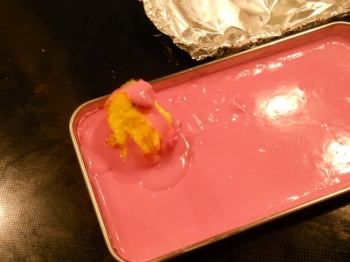Baking Your Own Carving Blocks
Have a lot of left over shavings after you've carved? Or even larger chunks that aren't really big enough for your large imagination? Never fear! We've figured out how to reuse them! This tutorial has been more than a year in the making—though admittedly, it's because I never seemed to have enough carving scraps to test on. I've primarily carved in the pink stuff so that's what I had the most of and what this tutorial uses, but I have tried this with small samples of PZ Kut as well which worked but causes the new carving block to be slightly discolored.
There turns out to be an added benefit if you do this with the new pink stuff that doesn't carve quite so well as the old pink stuff—the process of melting and re-hardening the carving blocks seems to give it better carving characteristics more in tune with the old version! Don't ask me why—I'm not a chemist and have no idea how this stuff works—but the results speak for themselves! So don't despair, the pink stuff is BACK! =)
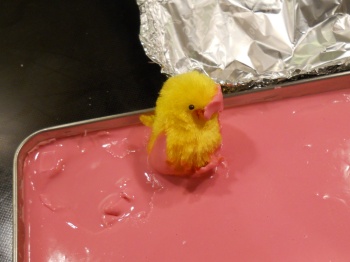
Most of the stuff you'll need for this project you probably have at home, but I would recommend using a dedicated tools for this project. You don't want your carving block to pick up any microscopic food particles that might attract rodents! Amanda found ours at a Japanese dollar store and our total expense was less than $10!
- cheese grater and/or knife
- small, flat pan
- aluminum foil
- spoon
- bug repellent (make sure it includes DEET!)
- lots and lots of slivers and chunks from old carvings (only tested with the pink stuff and PZ Kut—other carving mediums might very well work, but I'm not making any promises!)
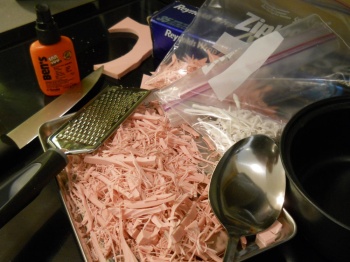
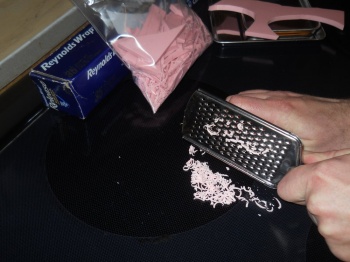
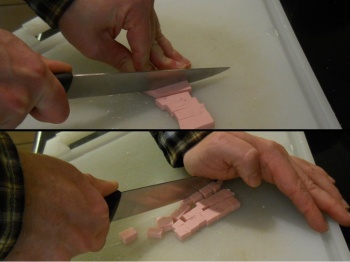
Now this is just brilliant. Use DEET as a cooking spray. I don't really know that this will keep bugs and critters away from your carvings, but I figured it can't hurt and it works remarkably well as a food release spray!
IMPORTANT! Do not use DEET on any pan that will be used for food later. Ever. If you don't have DEET readily available, just use any old food release spray such as Pam. (However, it would be a lot more likely that those will attract animals rather than repel them!)
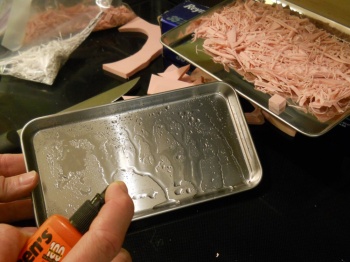
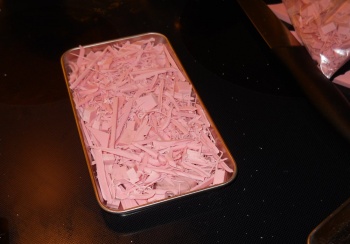
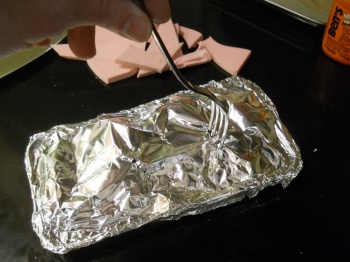
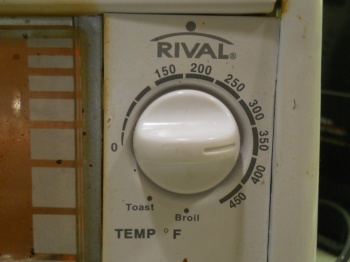
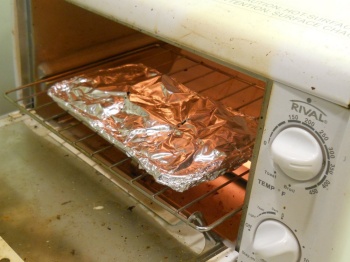
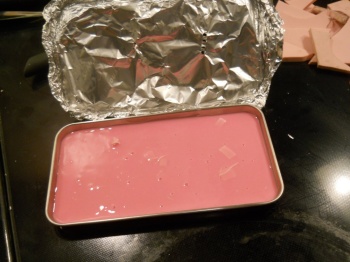
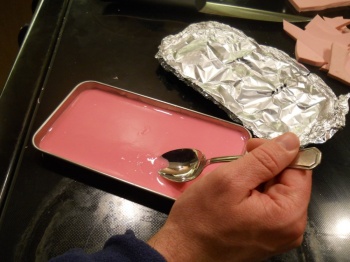
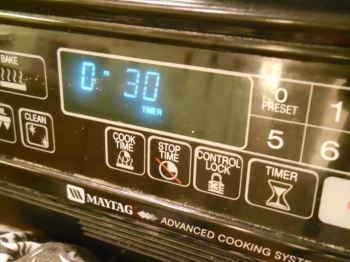
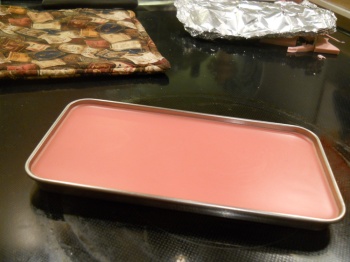
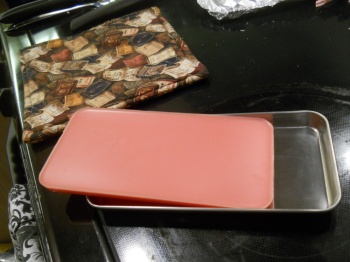
I'm still playing with some ideas, but it's possible to change the color of the carving block by mixing in some food coloring. Just make sure the color you choose is darker than the color of the carving block. White PZ Kut would probably be best for this, but my experiments were always on the pink stuff. Mix it in as best you can with a fork while trying to avoid forming new bubbles.
It's also possible to mix different types of carving mediums together, but that must be thoroughly mixed together. If they aren't well-mixed after they melt, the different types don't tend to bond very well together. It's kind of a hassle, though, so if you have enough to make a carving block out of a single type of material, I'd recommend you do that.
And that's it! It's actually pretty easy and straight-forward to reuse all those left over scraps from your carving sessions and turn them into new carving blocks! If you try doing with with other carving materials, please let me know how it works out so I can add the results here. Thanks!
